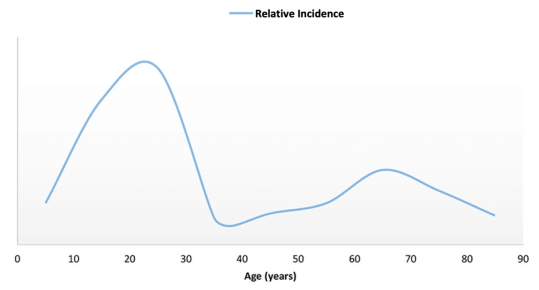Have you heard of BAS? It stands for Bitcoin Anxiety Syndrome (Recently included in DSM-V-TR). This is the second known Bitcoin-related illness, after BDS (Bitcoin Derangement Syndrome). Below is a summary of the condition submitted to The Lancet (ahead of print).
Bitcoin Anxiety Syndrome: A Summary
Parman (No affiliations), Anonymous.
There has been a slow and insidious outbreak of a novel illness, Bitcoin1 Anxiety Syndrome (BAS), spreading to scandemic proportions over the last 3 years. As far as we know, this is the first report in the medical literature describing the clinical condition formally.
In terms of demographics, there is a bimodal age distribution, predominantly males, between ages 20-40, and a second peak around age 65. There is no racial or class differentiation, but as would be expected, a left political bias is protective.

Symptoms are gradual in onset, but reach high intensity within six months and persist indefinitely.
Patients describe an overwhelming sense of bullishness, leading to panic, resentment, and socially inappropriate outbursts (particularly to those with the same condition – eg the “GFY” sign is diagnostic).
Curiously, these symptoms are initially relieved, but then exacerbated by, Bitcoin podcasts. Tolerance to podcasts develops quickly, with increasing episodes per day and increasing playback speeds required to maintain the same effect. There are case reports of up to 3x speed podcast immersions, but these are rare. In the most severe instances, actual podcast guest-appearances have been documented.
Natural progression leads to a Bitcoin Twitter addiction, alternating between notification hits and 5-minute candle snorting.
Treatment is available, but generally inadequate, and the beneficial effects are transitory. Initial simple and non-invasive measures in the outpatient setting start with self-administered daily stacking of sats. Unfortunately, this offers only mild relief lasting anywhere from 5 minutes to 12 hours.
For more advanced cases, dose-dense stacks with financial institution support, and government regulation, is the mainstay of care. Initially, effects are unanimously effective, but the relapse rate is above 95% at 12 months. Treatment with re-challenging doses diminishes in effectiveness (by over 50%), until eventual intractability.
The disease-free interval can be increased by up to 200% with assisted self-custody.2 Although this is illegal in some parts of the world, it is cost-effective, maintains patient dignity, and is an ethical option. We believe patients have the right to choose.
New research we are conducting at our university involves daily sunning-of-balls, with promising early results. Reports will follow in the coming 12 months. Other avenues of research are being conducted by others, involving community support through Bitcoin meet-ups, self-sovereign home-mining, and very recently 24-hour home Nostr.
References:
- Nakamoto, Satoshi. Bitcoin: A Peer-to-Peer Electronic Cash System. https://bitcoin.org/bitcoin.pdf
- Parman, Mentorship Program, http:/armantheparman.com/mentorship
- DSM-V-TR, https://doi.org/10.1176/appi.books.9780890425787
On-chain or Lightning